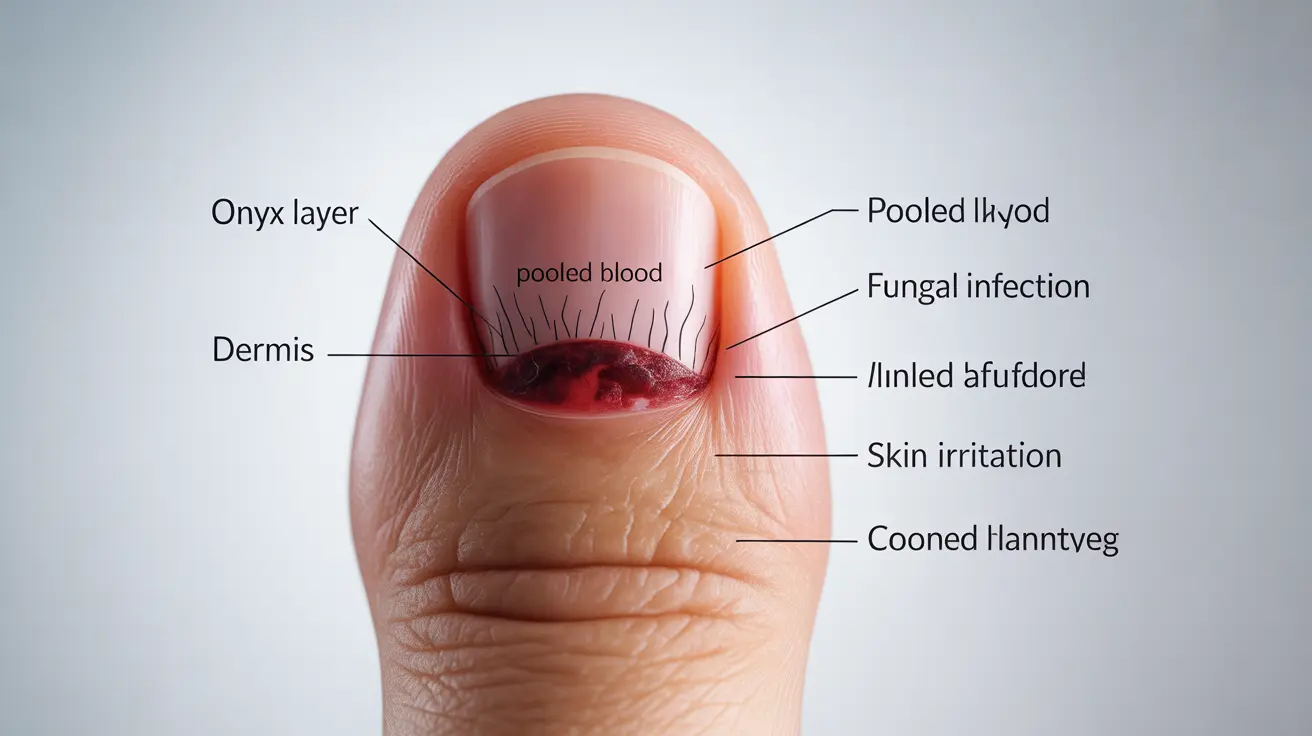A black toenail can be an alarming sight, often causing concern for many people who experience this condition. This discoloration, technically known as subungual hematoma, occurs when blood pools beneath the toenail, creating a dark or black appearance. Understanding the causes, symptoms, and appropriate treatments is crucial for proper care and prevention of complications.
While many cases of black toenails are harmless and resolve on their own, some instances may require medical attention. This comprehensive guide will help you understand when to be concerned and what steps to take for effective treatment.
Common Causes of Black Toenails
Black toenails can develop for several reasons, ranging from minor injuries to more serious underlying conditions:
Trauma and Impact
The most common cause of a black toenail is physical trauma, which can occur from:
- Dropping heavy objects on the toe
- Stubbing the toe forcefully
- Repetitive pressure from ill-fitting shoes
- Long-distance running or hiking
Fungal Infections
Sometimes, what appears to be a black toenail may actually be a severe fungal infection that has caused debris to build up under the nail, creating a dark appearance.
Medical Conditions
In rare cases, a black toenail might indicate:
- Melanoma (a form of skin cancer)
- Underlying health conditions affecting circulation
- Kidney disease
- Heart disease
Signs and Symptoms to Watch For
When examining a black toenail, pay attention to these important indicators:
- Pain or throbbing sensation
- Pressure under the nail
- Loose or lifting nail
- Foul odor or discharge
- Changes in nail texture
- Spreading of the discoloration
Treatment Options
Home Care
For minor cases of black toenail, these home remedies may help:
- Elevating the affected foot
- Applying ice to reduce swelling
- Wearing properly fitting shoes
- Keeping the area clean and dry
Medical Treatment
Professional medical treatment may include:
- Nail trephination (drilling a small hole to release pressure)
- Removal of the affected nail
- Prescription medications for fungal infections
- Biopsy if melanoma is suspected
Prevention Strategies
To reduce your risk of developing a black toenail:
- Wear properly fitted shoes with adequate toe room
- Trim toenails regularly and straight across
- Use protective footwear during sports activities
- Keep feet clean and dry
- Choose moisture-wicking socks for exercise
Frequently Asked Questions
What are the most common causes of a black toenail?
The most common causes include trauma from impact or pressure, repetitive stress from athletic activities, and fungal infections. Physical injury is the leading cause, especially among athletes and people who wear tight shoes.
How can I tell if my black toenail is from an injury or a fungal infection?
An injury-related black toenail typically appears suddenly after trauma and may be painful, while fungal infections develop gradually and often cause the nail to become thick, brittle, and malodorous. Injury-related cases usually show a distinct blood pool under the nail.
When should I see a doctor about a black toenail?
Seek medical attention if you experience severe pain, signs of infection (redness, warmth, swelling), if the discoloration spreads or changes pattern, or if you have no recent injury to explain the condition. Also consult a doctor if you have diabetes or poor circulation.
What treatments are available for black toenails caused by fungal infections or trauma?
Treatment options include pressure relief through nail trephination, complete or partial nail removal for severe cases, antifungal medications for infections, and supportive care such as elevation and ice application. The specific treatment depends on the underlying cause.
How can I prevent black toenails from developing, especially if I exercise regularly?
Prevention strategies include wearing properly fitted athletic shoes with adequate toe box room, keeping toenails trimmed, using moisture-wicking socks, and gradually increasing exercise intensity. For runners, ensuring proper form and avoiding sudden increases in mileage can help prevent trauma-related black toenails.




